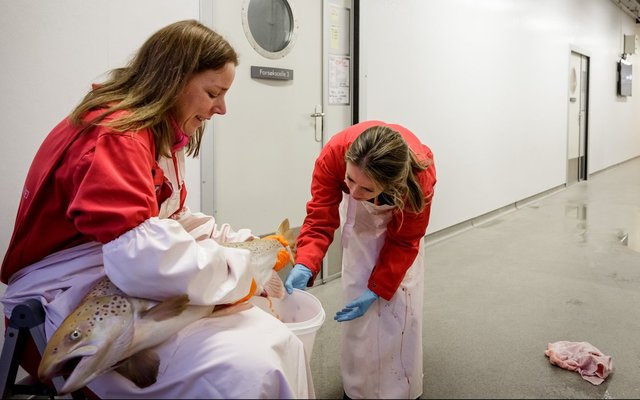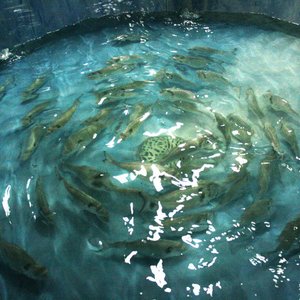Sterile farmed salmon is one of the solutions to protect wild salmon from escaped farmed salmon. Currently, the method to sterilize salmon is by removing a specific gene for each newly fertilized salmon egg. This is a time-consuming method that can not be used for commercial production.
Norwegian scientists from the Institute of Marine Research developed a method so that sterile fish can be mass-produced. “We came to the conclusion that the simplest method to produce enough sterile salmon is if some of the sterile fish can still have offspring,” explained geneticist Anna Wargelius.
The solution has now been patented. “We add an RNA molecule in the salmon we want to use as sterile broodstock. This molecule contains a “recipe” that allows the genetically sterile fish to produce eggs who all inherit their parents' genetic sterility,” Wargelius explained.
The lack of sexual maturation also leads to better animal welfare in the farms. “When salmon become sexually mature, it stops growing. In the wild, salmon migrate to freshwater when sexual maturation begins, where it does well, in contrast to farmed salmon, which must continue in seawater. There, sexually mature salmon are more susceptible to diseases,” said Wargelius.
The project, which started in 2016, applies the Nobel Prize-awarded CRISPR method. “This method enables us to improve the sustainability of the industry since it prevents genetic impact on wild fish and improves animal welfare in the farms,” Wargelius said.
Download the study here.













